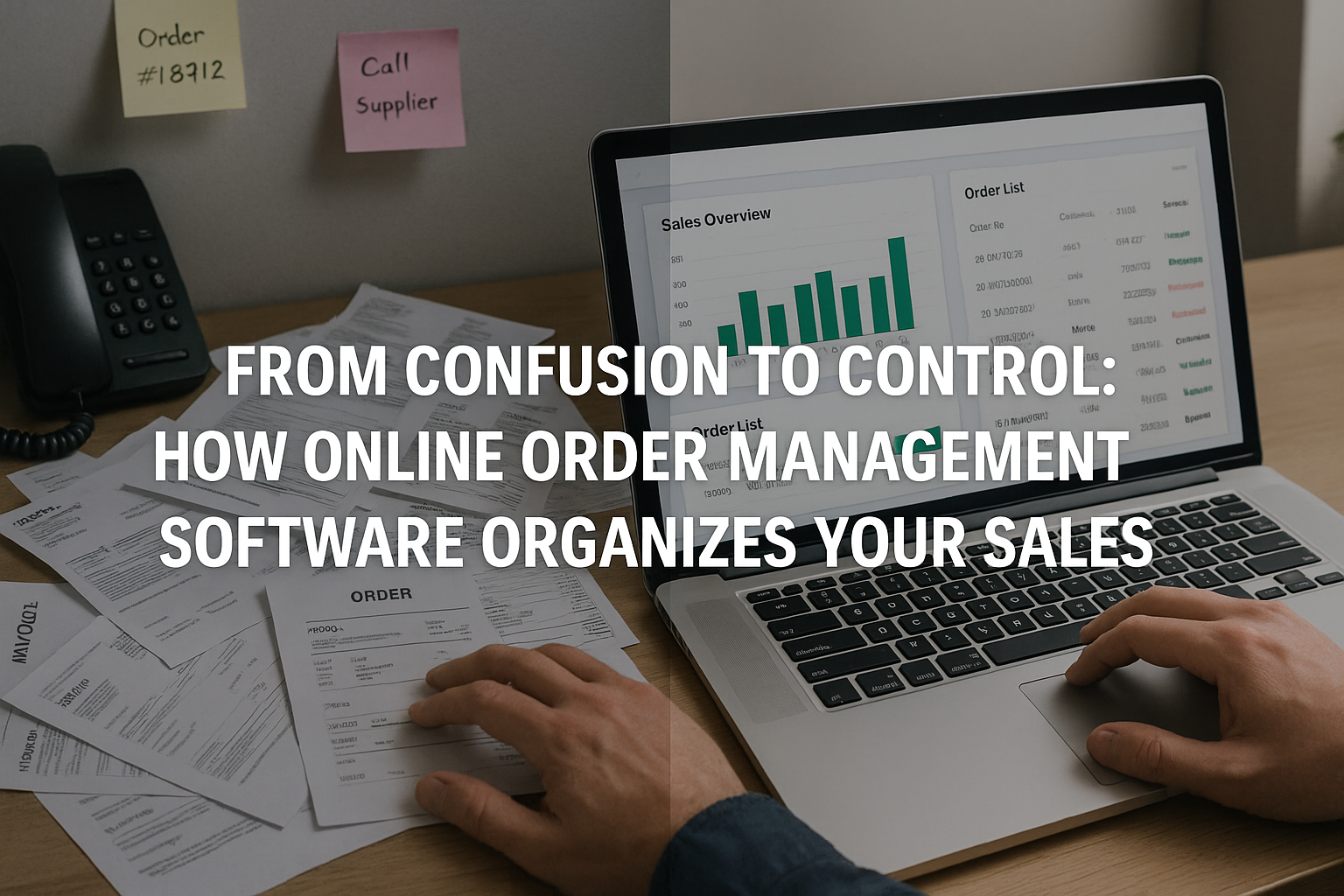Let’s talk about a universal business headache. The sale is closed, but the product is back-ordered. Your storage is full, yet your best-sellers are out of stock. This all-too-common scenario of simultaneous overstock and stockouts is a direct hit to your bottom line, wasting capital and crippling customer trust. Achieving perfect harmony between supply and demand is the ultimate goal. The solution? A sophisticated sales inventory management system.
Consider this technology the central nervous system of your company. It’s the crucial link that synchronizes each sale with your stock, giving you a clear, up-to-date picture of the state of your company. You begin steering the ship with a clear view of the horizon, rather than just bailing water. This is the power of proactive control. Yet, navigating the crowded market of software solutions is a challenge in itself. Selecting the wrong one does more than waste money—it can cement inefficiency into your daily operations.
This guide breaks down the non-negotiable features to look for in a modern sales and inventory management system. The goal is to arm you with the right questions so you can find a solution that doesn’t just meet your needs today, but actively fuels your growth tomorrow.
1. The Human Factor: Prioritizing Ease of Use
Let’s face it: if software is hard to use, users will figure out how to get around it. As your staff turns back to accustomed, prone to errors spreadsheets, a system that appears complex will collect digital dust. Accurate data requires usability; it is not a luxury.
Pay special attention to the interface while assessing a new system. Is it clear and easy to use? Can your team find key functions—like checking stock or processing a return—without clicking through a maze of menus? The best sales and inventory system feels almost instinctive. It requires minimal formal training because its design guides the user naturally.
Seek out features such as dashboards that may be customized to display the data that is most pertinent to each team member’s position. A clean, focused dashboard empowers. When a system is genuinely easy to use, adoption soars, and with it, the accuracy of your data.
2. The Truth in Real-Time: Ending Inventory Guesswork
It’s like operating a vehicle while only looking in the rearview mirror when you rely on out-of-date inventory data. You may have a vague notion of where you’ve been, but you can’t see clearly into the future. Real-time tracking is the feature that brings your inventory into the present tense.
What does this mean in practice? It means the moment a sale is made online or at your retail counter, your stock count updates instantly across the entire business. This single feature prevents the dreaded oversell, where you promise a customer a product you can’t deliver. That’s a surefire way to damage hard-earned trust.
But real-time visibility is about more than just preventing stockouts. A sophisticated sales inventory management system will also provide:
- Automated low-stock alerts, nudging you to reorder best-sellers before you run out.
- Support for barcode scanners ,which slashes the time spent on stock counts and reduces human error to a minimum.
This live connection to your inventory is the bedrock of operational efficiency. It replaces reactive scrambling with proactive, confident management.
3. Don’t Let Your Software Work Alone: The Critical Need for Integration
Let’s be real—manually typing numbers from one screen into another isn’t a strategy. It’s the type of soul-crushing, monotonous job that reduces output and introduces mistakes with each keystroke.
This is the exact problem you face with a standalone inventory system. If it lives on an island, separate from your point-of-sale, your online stores, and your accounting books, you’ve just created a full-time job of data babysitting. You’re not just managing stock; you’re acting as the fragile, error-prone bridge between all your critical software.
Think of your business tech stack not as a collection of separate tools, but as a team. And for a team to win, the players need to pass the ball to each other. Your sales inventory management system is your star quarterback. It has to seamlessly connect with your other key players:
Your Point-of-Sale (POS): The moment a cashier rings up a sale, that inventory number should drop immediately. No lag. No “I’ll update it later.” This is how you avoid promising a customer something that’s already gone.
Your Online Storefronts (like Shopify or Amazon): Your credibility is on the line with every click. The only method to avoid upsetting clients by selling something you don’t have is to automatically sync across all platforms.
Your accounting program (such as Xero, QuickBooks, etc.): Why record each transaction and expense by hand? A connected system feeds this data directly into your books. The result? Month-end closes become startlingly fast and far more accurate.
When these integrations are in place, magic happens. The friction disappears. Duplicate work vanishes. No more confusion. No more conflicting reports. Just a clear, single truth about your business.
4. From Data to Direction: Powerful Analytics
Raw data is just numbers on a screen. What transforms those figures into a competitive edge is insight. In addition to storing your data, a top-notch sales inventory management system helps you interpret it and tells the tale of the sales.
Strong reporting and analytics are useful in this situation. You must be able to respond to important commercial inquiries with ease. Which products are your true stars, and which are lagging? How quickly is your inventory turning over? Are you tying up too much cash in slow-moving stock?
With the use of robust reporting tools, you can:
- Determine seasonality and sales trends to make more informed purchases.
- For a real-time perspective of a significant corporate asset, compute an accurate inventory valuation.
- Forecast future demand based on historical data, moving from educated guesses to a data-driven strategy.
This level of insight is transformational. It transforms your job from fireman to strategist, allowing you to focus on development prospects rather than everyday operational difficulties.
5. The Critical Need for Scalability
Your business is not static. You have plans, goals, and ambitions for growth. The system you choose today must be capable of growing alongside you. A platform that fits perfectly now might become a straitjacket in two years, forcing a painful and expensive migration.
Scalability is about future-proofing your investment. Don’t get stuck with a system that can’t keep up with your success. The real test of any software isn’t how it handles your business today, but how it performs when you’re twice as big.
Before you sign anything, put potential vendors on the spot. Ask them the tough questions:
- “Show me what happens when we open our second location.”
- “Can your platform handle a 10x increase in our product catalog without slowing down?”
- “What advanced features can we grow into without switching platforms entirely?”
The best sales and inventory system acts like a reliable business partner – it doesn’t just work well when things are small. It needs to maintain its speed and stability even when you’re processing ten times the orders. Choosing technology that scales isn’t just about features – it’s about committing to a platform that will support your growth for years to come, not just get you through the next quarter.
6. Great Support Isn’t a Luxury—It’s Your Get-Out-of-Jail-Free Card
One basic fact about business software is that you will eventually run across problems. It might be a perplexing report, an odd bug, or a query that your staff is unable to resolve. When that time arrives, the level of customer service provided by your provider will determine whether there is a little, five-minute blip or a major operational disaster.
This makes their support system a critical part of your buying decision. Don’t just take their word for it; do a little detective work. Can you actually find their phone number, or are you sent straight to a generic email form? If they offer live chat, test it during your trial. See how long it takes to get a real, helpful person on the line.
And don’t ignore the power of a well-stocked self-help library. At 10 PM, sometimes all you need is a swift response. Your issue may frequently be resolved immediately without the need for a support request thanks to a comprehensive knowledge library full of understandable articles and quick video lessons.
Consider dependable support to be the insurance policy for your company. You wish you would never need it, but when you do, its worth is evident right away. Because there is a safety net in place, your team can work with confidence knowing that they will be caught if they fall.
The Bottom Line is to Choose Growth
Your choice of a sales inventory management system is a fork in the road. The right one becomes your engine for growth—streamlining operations, boosting profits, and making your team’s life easier. The wrong one creates daily friction that holds you back.
The six factors we’ve covered aren’t just a checklist; they’re your blueprint for success. When a system gets them right—like SMPLSale does—it becomes more than software. This is how you gain a true competitive edge—by turning inventory from a headache into your secret growth weapon. For a clear example of this principle in action, look at SMPLSale’s unified approach. It provides the intuitive control modern businesses require.
Explore how a purpose-built system can streamline your world at https://smplsale.com/inventory/. Make the right choice, and you’ll select a system that doesn’t just support your business but actively propels it.




